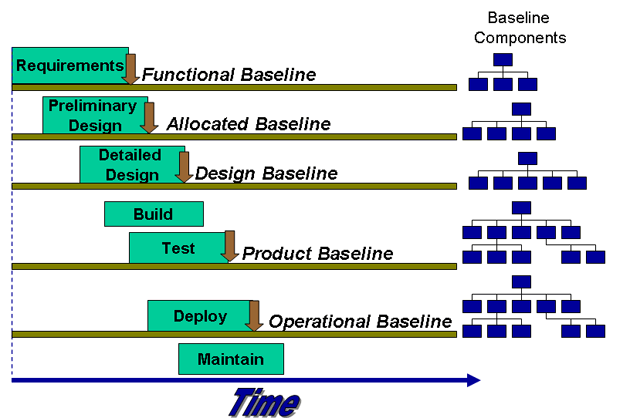| SOFTWARE IN PRACTICE |
|
Configuration Management(Alias: CM)The administrative discipline of identifying the configuration of a system at discrete points in its development life cycle for the purposes of systematically controlling changes to the configuration and maintaining its integrity and traceability throughout its development life cycle. The figure depicts a typical set of these discrete points, commonly called baselines, where deliverables may be evaluated. Each baseline is a collection of work products, for example: documents, software and hardware components. A baselined item may not be changed without formal approval. A baseline thus provides a stable reference for further work. CM benefits. The configuration management function saves time and money by giving management precise visibility and therefore improved control over an evolving complex system. To learn more see: CA Configuration Management service, True Stories from the Annals of CM. The Four Functions of CMThe four functions of configuration management are:
An International Standard for Software CMThe international software engineering community generally agrees on the role of configuration management in a software project. This role is comprehensively described in IEEE 828 - Standard for Software Configuration Management Plans1. Configuration Management Baselines in the Development Lifecycle
|

|